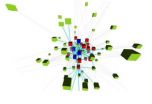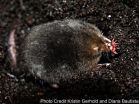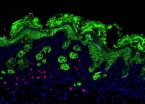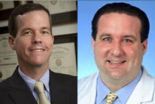(Press-News.org) NEW YORK, NY — A New York-based physician-researcher from Touro College of Osteopathic Medicine, best known for his research into fertility and twinning, has uncovered a potential connection between autism and a specific growth protein that could eventually be used as a way to predict an infant's propensity to later develop the disease. The protein, called insulin-like growth factor (IGF), is especially involved in the normal growth and development of babies' brain cells. Based on findings of prior published studies, Touro researcher Gary Steinman, MD, PhD, proposes that depressed levels of this protein in the blood of newborns could potentially serve as a biomarker for the later development of autism. However, this connection, described below in greater detail, has never been directly studied. Steinman presents his exciting theory in the journal Medical Hypotheses (article in press), available online today, January 31.
IGF stimulates special cells in the brain to provide an essential insulating material, called myelin, around the developing nerves that is needed to efficiently transmit important messages about everything the brain controls — from physical functions such as movement to mental functions such as sensory perception, thinking and emotions. In the developing fetal and pediatric brain, myelin is also important for nerve fibers in one area of the brain to form proper pathways to other regions, allowing the body to hone functions over time. Insufficient IGF results in insufficient insulating material, as has been seen in brain biopsies of autistic individuals, and may impede proper pathway development. Steinman is proposing that this potential relationship between neonatal IGF levels and autism be directly studied.
In the United States, autism is currently reported in 1 in 88 live births — about 125 new cases every day — and it is four times more common in boys than in girls. Women who have given birth to an autistic child have approximately a one-in-five chance of having another. The impact that this life-long disease has on children, families, and finances is enormous. An affected child could add as much as $3 million in lifetime medical expenses over an unaffected child.
"Autism is on the rise, especially in the last two decades — either because of environmental factors, expanded diagnostic criteria, or both. Yet almost nothing is currently known about the predisposing molecular and histological changes that differentiate a newborn destined to be neurologically normal from an autistic one," said Steinman.
Because no effective treatment or prevention for autism exists, research examining Steinman's idea is critical, as it may hold the key to understanding the cause of this often devastating illness. In his article, Steinman proposes a study to investigate this hypothesis, and if this study supports his theory that identification of reduced IGF at birth is later followed by the appearance of autistic characteristics, then the subsequent development of a simple biomarker blood test is equally critical.
In the proposed study, a sample of umbilical cord blood would be collected immediately after birth to measure IGF. Alternatively, a routine heel-stick blood sample might be used, as these are already collected from newborns within a day or two after birth to test for inborn errors of metabolism in most U.S. hospitals. Then the data collected at birth would be compared with the neurologic evaluation of the baby at 18 to 36 months of age.
If successful, the next phase of proposed research would entail detecting depressed IGF levels in amniotic fluid during the second trimester of pregnancy. This might be followed by supplementation of the growth factor before symptoms of autism develop.
"Further investigation into whether pharmaceutical treatment in the early postnatal period of newborns with a suspicion of a tendency of developing autism could reverse the effects of having had pathologically low levels of IGF while in utero and reduced IGF in their umbilical cord blood at birth would be a next step," said Steinman. Potential IGF-raising therapeutic agents that may be considered, which would all require caution, include Prozac®, Copaxone®, Increlex®, and recombinant human IGF. Steinman also said that as a natural source of IGF, breast milk may also be an important consideration; an increased duration of breastfeeding is associated with a decreased incidence of autism.
The research into this theory could present an opportunity for public-private collaboration between academia and industry. In fact, if corroborated, Steinman's theory could also point to potential risks to pregnant women and women of child-bearing age of drugs able to lower IGF levels, of which there are several — Somavert®, Sandostatin®, Parlodel®, and several experimental IGF receptor antagonists.
Additionally, if Steinman's theory is confirmed by the proposed, or any related, studies, a search of gene variations could then be conducted in autistic children. This kind of information might allow genetic risk determinations in the preconception period, similar to other forms of genetic testing and counseling during the family planning stages. Genetic testing and counseling for autism may be especially helpful to couples who start families later in life. Newborn levels of IGF are inversely proportional to parental age, and older mothers and fathers have a higher risk of conceiving children who will later develop symptoms of autism.
In developing his hypothesis and proposed investigation, Steinman examined IGF research to date in the areas of genetics, intrauterine environments, postpartum factors, and nervous system development, as well as a few other related factors. "We believe there's a good chance this theory will be validated, but much work remains. My collaborators and I are excited to have identified this potential connection and hope it leads not only to the discovery of the cause of autism but also a way to detect it early, treat it, and ultimately prevent it," said Steinman.
INFORMATION:
This study was funded by the Touro College Office of Sponsored Programs and the Israel Psychobiologic Fund.
Steinman G, Mankuta D. Insulin-like growth factor and the etiology of autism. Med Hypotheses. 2013 (in press). Epub 2013 January 31.
Students who work together and interact online are more likely to be successful in their college classes, according to a study published Jan. 30 in the journal Nature Scientific Reports and co-authored by Manuel Cebrian, a computer scientist at the Jacobs School of Engineering at the University of California San Diego.
Cebrian and colleagues analyzed 80,000 interactions between 290 students in a collaborative learning environment for college courses. The major finding was that a higher number of online interactions was usually an indicator of a higher score in the class. ...
Adding a new member to a working group can create distrust between members and hinder group functions, but a new study suggests that the distrust created is between older group members rather than about the newcomers- especially when previous group performance with just the older group members is poor. The results are part of a study published January 30 in the open access journal PLOS ONE by Matthew McCarter and Roman Sheremeta from Chapman University (U.S).
Previous studies report that changing members in an existing group hurts group performance, but the underlying ...
The most sensitive patch of mammalian skin known to us isn't human but on the star-shaped tip of the star-nosed mole's snout. Researchers studying this organ have found that the star has a higher proportion of touch-sensitive nerve endings than pain receptors, according to a study published January 30 in the open access journal PLOS ONE by Diana Bautista and colleagues from the University of California, Berkeley and Vanderbilt University.
Touch and pain are closely intertwined sensations, but very little is known about how these sensations are detected in our cells. In ...
VIDEO:
This video shows the "dipping " technique performed by chimpanzee Ayumu. Note that he uses his mouth to insert the tube into the bottle. In form, his technique is identical to...
Click here for more information.
Chimps can learn more efficient ways to use a tool by watching what others do, according to research published January 30 in the open access journal PLOS ONE by Shinya Yamamoto and colleagues from Kyoto University and Kent University, UK. Their study ...
A cluster of tapeworm eggs discovered in 270-million-year-old fossilized shark feces suggests that intestinal parasites in vertebrates are much older than previously known, according to research published January 30 in the open access journal PLOS ONE by Paula Dentzien-Dias and colleagues from the Federal University of Rio Grande, Brazil.
Remains of such parasites in vertebrates from this era are rare- of 500 samples examined, only one revealed the tapeworm eggs. This particular discovery helps establish a timeline for the evolution of present-day parasitic tapeworms ...
Contact: Michelle Geis
mgeis@burnesscommunications.com
301-280-5712
Contact: Susan Tonassi
301-280-5711
stonassi@burnesscommunications.com
Pact invests US $109 million to secure critical genetic material, maintain global food production
CGIAR consortium partners with global crop diversity trust to revitalize genebanks housing scores of crops considered essential to food security
BONN, GERMANY (31 JANUARY 2013)—Concerned that inconsistent funding eventually could weaken a global network of seed banks at a time when farmers face unprecedented challenges, two ...
Scientists at the Forsyth have gained new insight on how Tuberculosis (TB) remains a global epidemic. Although drugs have been available to fight TB for 50 years, the disease still infects nearly 2.2 billion people worldwide and causes 1.7 million annual deaths. This is largely attributed to the bacteria's ability to stay dormant in the human body and later resurface as active disease. The Forsyth team, and its collaborators from Stanford University, has recently discovered that Mycobacterium tuberculosis, the bacteria that causes TB, can lay dormant and thrive within ...
PHILADELPHIA - The increasing incidence of allergic skin diseases, and the accompanying economic burden and heightened risk of developing other allergic conditions, have spurred researchers to look for better ways to control these immune system-based disorders.
Atopic dermatitis, more commonly called eczema, now affects 10 to 20 percent of children in the United States and direct health-care costs exceed $3 billion, according to the National Institute of Arthritis and Musculoskeletal and Skin Diseases. What's more, up to 50 percent of children with atopic dermatitis ...
Big Data computation at the Virginia Bioinformatics Institute at Virginia Tech reveals that over the past two decades funding agencies may have awarded millions and possibly billions of dollars to scientists who submitted the same grant request multiple times — and accepted duplicate funding.
An analysis led by Harold R. Garner, a professor at Virginia Tech, not only indicates that millions in funding may have been granted and used inappropriately, it points to techniques to uncover existing instances of duplicate funding and ways to prevent it in the future. The analysis ...
CHAPEL HILL, N.C. – Despite a substantial increase in the number of people suffering the debilitating and often deadly effects of heart failure, treatments for the condition have not advanced significantly for at least 10 years. An analysis by researchers at the University of North Carolina School of Medicine shows new breakthroughs could be closer than we thought.
The analysis points to striking similarities between heart cells in patients with heart failure and brain cells in patients with Alzheimer's disease, raising the possibility that some treatment approaches being ...




